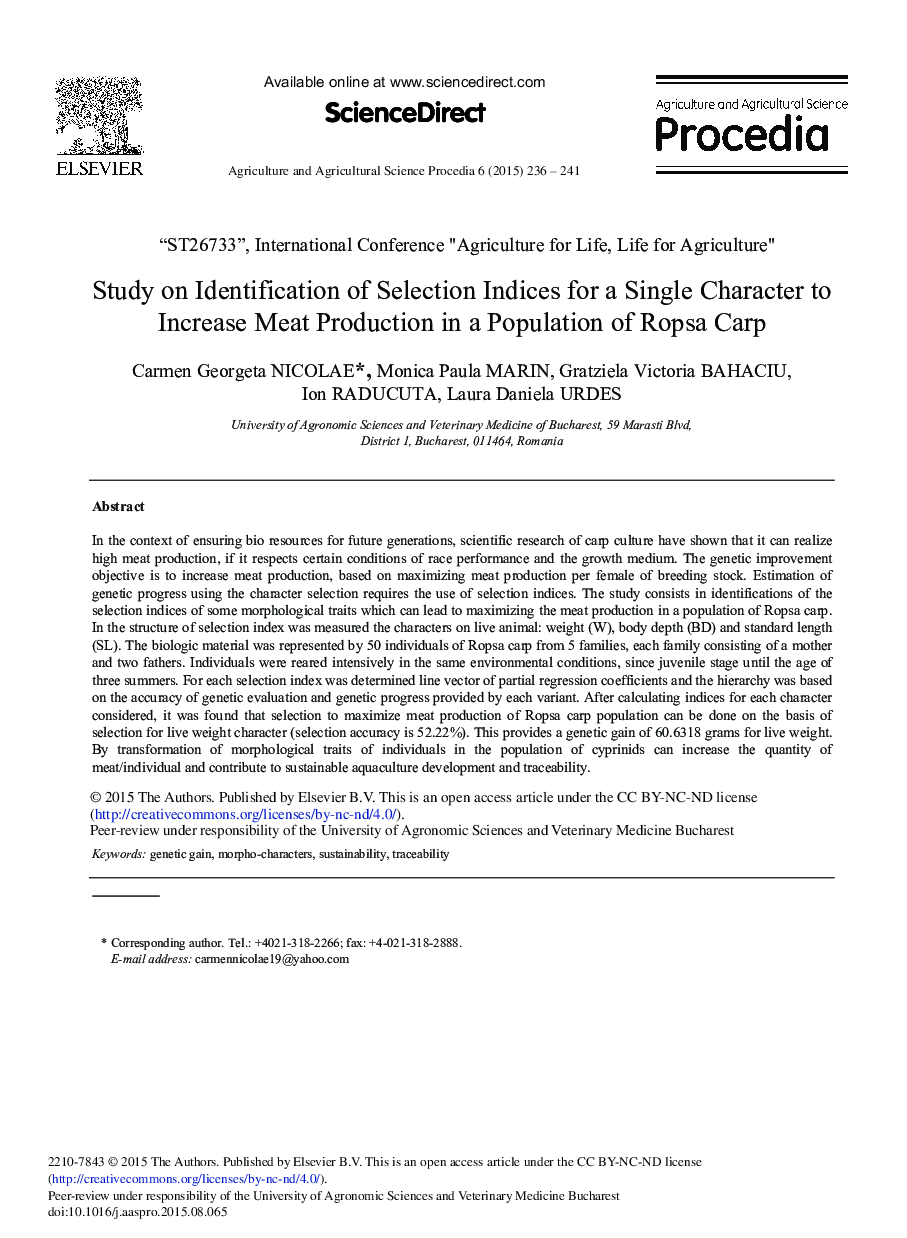| Article ID | Journal | Published Year | Pages | File Type |
|---|---|---|---|---|
| 4492432 | Agriculture and Agricultural Science Procedia | 2015 | 6 Pages |
In the context of ensuring bio resources for future generations, scientific research of carp culture have shown that it can realize high meat production, if it respects certain conditions of race performance and the growth medium. The genetic improvement objective is to increase meat production, based on maximizing meat production per female of breeding stock. Estimation of genetic progress using the character selection requires the use of selection indices. The study consists in identifications of the selection indices of some morphological traits which can lead to maximizing the meat production in a population of Ropsa carp. In the structure of selection index was measured the characters on live animal: weight (W), body depth (BD) and standard length (SL). The biologic material was represented by 50 individuals of Ropsa carp from 5 families, each family consisting of a mother and two fathers. Individuals were reared intensively in the same environmental conditions, since juvenile stage until the age of three summers. For each selection index was determined line vector of partial regression coefficients and the hierarchy was based on the accuracy of genetic evaluation and genetic progress provided by each variant. After calculating indices for each character considered, it was found that selection to maximize meat production of Ropsa carp population can be done on the basis of selection for live weight character (selection accuracy is 52.22%). This provides a genetic gain of 60.6318 grams for live weight. By transformation of morphological traits of individuals in the population of cyprinids can increase the quantity of meat/individual and contribute to sustainable aquaculture development and traceability.
